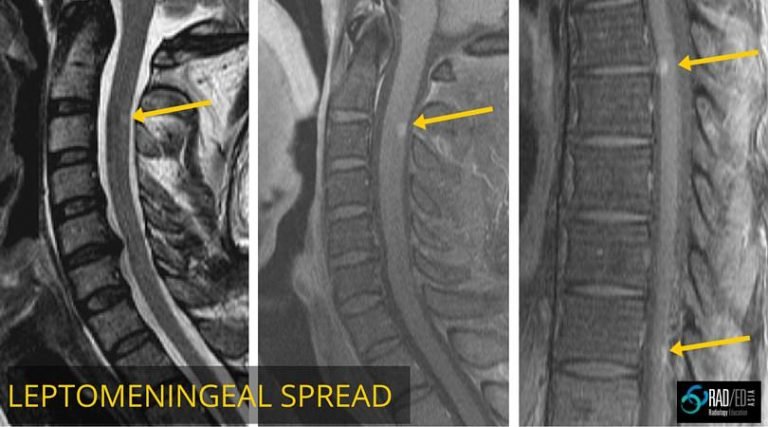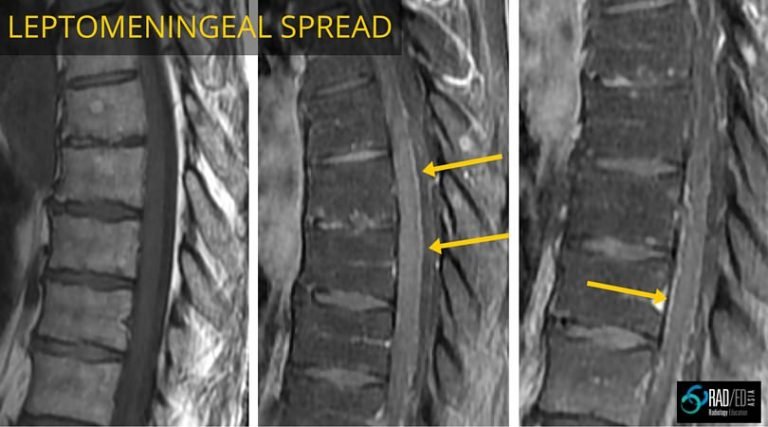There is a wide variation in when contrast is given for patients who come in with known malignancy and neurological symptoms. Often, contrast is given when there is no need and not given when it is required.
Take a fairly common request. “ Patient has breast cancer. New lower limb neurology. ?Spinal cord compression”
The usual routine would be to do a Sagittal T1 and T2 of the region of concern and
- If no abnormality is seen, that would be the end of the scan with no contrast given.
- If there is cord compression say from a pathological fracture or visible epidural tumour, the patient would get contrast.
Now this is the opposite of what should be done.
- If you see a cause for the patient’s symptoms such as a pathological fracture compressing the cord, what extra information do you get from giving contrast? I would think not very much. You already know the cause of the patient’s problems for which she will get radiotherapy, and seeing the pathological fracture or epidural tumour enhance would not add much more. You must however, do a screening T2 scan of the entire spine, as there may be multiple sites of compression that require treatment.
- If however on the non contrast scan you do not see an obvious cause, this when you DO need to give contrast. Why? Because you have a person with known malignancy, and you must now rule out leptomeningeal metastases, which you may not see on the non contrast scans.
Image above: Breast carcinoma. Faint T2 signal posterior C2/3. Post contrast enhancement of leptomeningeal metastasis at C2/3 and at thoracic cord not seen on non contrast scans.
Image above: Breast carcinoma leptomeningeal metastases. First image T1 non con no abnormality. Subsequent two images post contrast leptomeningeal sugar coating of cord from metastases.
Now you could say if you saw a pathological fracture on the non contrast scan, giving contrast might show further leptomeningeal metastases, that would be right and does provide some incremental information. So for completeness you could give contrast.
But more importantly, you don’t want to miss the patient who has no obvious cause on the non contrast scans, but has leptomeningeal metastases.
Key points
- In someone with know malignancy, if you don’t see an obvious cause for symptoms on the non contrast scans, make sure you give contrast to exclude leptomeningeal metastases.
- If you see cord compression, concentrate on the area of clinical concern BUT make sure there is a screening scan of the whole spine done, as there may be multiple areas of compression that require treatment.
- Always do a screening T2 sagittal scan of the remainder of the spine to ensure there is no other site of compression.



